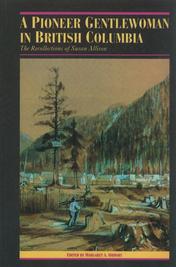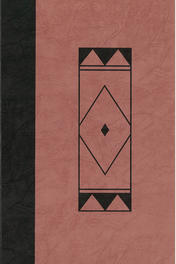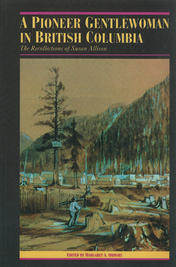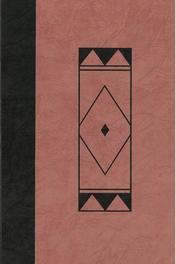History

A Progression of Judges


A Rich and Fruitful Land
Hard-Rock Mining
Fairview
Thirty years after the gold rushes of the 1860s British Columbia was again in the throes of gold fever. However, this time the precious metal was to be won by lode mining rather than placer mining. Between 1885 and 1900 the Camp Hewitt Mining and Development Company along with others was searching for gold deposits in the area between Trepanier and Deep Creeks (between modern Peachland and Westbank). In 1893 J.M. Robinson of Portage la Prairie, Manitoba responded to the publicity the area was being given. Being already in Rossland, looking for gold properties, he decided to ride by horseback from Rossland to what is now Peachland, where he acquired ownership of several claims. However, the Kathleen Mine established by Robinson and his associates was disappointing and the Manitoban decided that the subdivision of land into orchard properties offered a more secure investment.
In the South Okanagan mining prospects proved much more profitable, In her article "Further Fairview Osoyoos Chronicles" Katie Lacey quotes from the first edition of a paper which started publication August 27, 1892 in Oro (now Oroville), Washington:
"Another promising camp in the Okanagan country is Fairview Camp, in British Columbia, eighteen miles north of Oro, close to the Okanagan River. Gold was discovered there first about four years ago but little was done towards development.
The first mine to bring the Camp into prominence was the Rattler, discovered by Hank Mankin, and for a long time the only means of support he had was to take the quartz and grind it to pulp between two large stones, and then wash the gold out in a pan."
Was Mankin using the horse-powered arrastre to mill his ore? The paper goes on to state that some Spokane investors put in a stamp mill but a dispute among the partners put an end to the operation. Fortunately some English capitalists arrived from London looking for likely mining property and bought the Rattler, and were examining other properties. The paper says of them:
"They left London May 4th, and have been all through the Slocan and Kootenai districts before coming here and are very favorably impressed with this country.
They have unlimited means at their command for legitimate mining investments and intend to make further purchases."
Lode mining was expensive. Machinery had to be purchased-stamp mills, compressors, pipes, flumes, concentrators, etc. Wages had to be paid and the product, whether in the form of gold bars or concentrate, had to be transported. Capital was essential and in the South Okanagan this came from either the United States or from England. Until train and boat service were established through the Okanagan in 1892 all equipment and supplies had to be brought in from south of the boundary.
Other claims that had been recorded by the summer of 1892 included the Wide West, Brown Bear, Silver Crown, Joe Dandy, Wynn M., Ontario, and Stem Winder. Later claims that developed into mines were: Morning Star, Evening Star, August, Tin Horn, Smuggler, Black Diamond, and Wild Horse. In some mines, silver as well as gold was recovered.
Soon a thriving town grew up on the bench high above the valley floor, about three miles west of the present town of Oliver. Estimates of its population vary. Some think that at its peak three thousand people lived there and that Fairview was, for a time, the largest settlement in the Interior of British Columbia. As transportation improved, access became easier. Dorothy Amor tells us that her father, Arthur D. Hardie, in November 1902 brought her mother as a bride to Fairview. Having come down Okanagan Lake to Penticton on a sternwheeler, they travelled in an open freight wagon south to Fairview, a trip of twelve hours?
Two of the valley's pioneer doctors, Dr. B.de F. Boyce and Dr. R.B. White, founded their first practices at Fairview having been encouraged to settle there by mining companies. Because this was where the action was, in 1898 the government agent C.A.R. Lambly was instructed to move his government office from Osoyoos to Fairview. One. can imagine the throbbing life of the town which had sprung up so suddenly-the hotels, the bars, the livery stables, stores, offices, a school, churches. Rev. William Irwin, known to the miners as Father Pat, had his Anglican congregation. But the town was not without its tragedies. The grandest hotel, known as the Big Teepee, burned to the ground with the loss of at least one life. A diphtheria outbreak took the lives of the children of another family.
But veins of ore run out and miners turn to better prospects. By 1910 Fairview was a ghost town.
Today only one house from the great mining era remains and the passerby would not recognize the townsite were it not for the two lots which once belonged to the Presbyterian Church and are now the property of the Okanagan Historical Society. The church building was moved to Okanagan Falls, where it serves the United Church congregation. Its dismantling before its removal from Fairview bears testimony to the skilled use of explosives developed by mining men. A charge of dynamite was hung from the ceiling of the church. When the dynamite was exploded the walls were blown out momentarily and then returned to their original position but with all the nails loosened. The boards could then be removed without damaging them.
The Great Gold Robbery
While some prospectors were staking claims in the mountains to the west of Fairview others were searching for promising properties in the mountains across the Okanagan Valley. The Victoria claim was located in 1884 by A. Goericke, possibly acting for J.C. Haynes. But it was not until 1887 when A McKinney and his associates, Rice, Burnam and Le Fevre, staked the Cariboo Amelia that any great interest was shown in the area. Robert Iverson in his booklet Camp McKinney tells us:
"The rich ore exposed on the Cariboo Amelia claims over a distance of some seventy feet with a width of some forty to fifty inches brought about another gold rush of sorts . . . Mickey Monahan and a group from Spokane, hearing of the rich strike were soon on the scene. Organized as a private company, they bought out Al McKinney and his associates. The Cariboo Amelia first organized as Cariboo Mining and Milling in 1888 and it was shortly after to become a public company known as Cariboo Mining, Milling and Smelting. Capitalization was at 800,000 shares with a par value of one dollar."
When Camp McKinney first came into being the only access to it was through Sidley. However, in 1893 the Government of British Columbia undertook to build a road from Okanagan Falls up past McCuddy and through Camp McKinney to Midway and on to Grand Forks. This was the only Canadian route from the Okanagan into the Boundary Country until 1911 when a road was built up Anarchist Mountain east of Osoyoos.
The camp, with a population of about 250 at its height, had six hotels, stores and other businesses, but no bank. The nearest bank in British Columbia was at Vernon. The Cariboo was Camp McKinney's major mine. When it ran out of high-grade ore it closed down in 1903 and Camp McKinney with it. However, the company had the distinction of being the first mining company in British Columbia to pay dividends which, by 1900, had amounted to $459,000.
For most people looking back to the turn of the century Camp McKinney's most exciting event was the great gold robbery. We are fortunate in having an account of the event from a man who was a storekeeper in the camp at the time.
The Gold Brick Robbery at Camp McKinney by Arthur K. W. Cosens
The Cariboo Mine at Camp McKinney of which Robert Jaffray was president, George B. McAulay, managing director, and Joseph P. Keane, superintendent, was a paying proposition from the grass roots down. James Monahan of Spokane was also a director of the Company and very instrumental in getting it under way after purchasing the property from the first owners, McKinney and Rice.
Monahan brought in the first unit of the stamp mill from the State of Washington, hauling it in with teams, and passing the customs at Osoyoos . . . In the year 1896 the Camp was running very smoothly. The stamp mill was pounding away incessantly day and night with only a cessation of the noise from the falling stamps for a short time twice a month during the time the "clean up" was in progress. After the amalgam had been retorted, the quicksilver being retained, the gold bricks of an approximate value of $30,000 per month were ready for shipment to the mint at San Francisco by express from the nearest railway which was at Marcus at one time, and later at Midway, after the advent of the railway to that point.
A certain amount of caution was usually taken when the bricks left Camp. Sometimes I have known them thrown into the jockey box of one of the wagons hauling concentrates or tailing to the railhead for shipment to the smelter at Tacoma. In this case the wagon would be met at its destination by one of the officials or trusted employees of the Company, the brick extracted and shipped, sometimes without the driver of the wagon knowing that he had been its custodian at all.
At other times it would be hidden in a sack of concentrates and the same procedure followed.
Then again it would be taken by the Superintendent on horseback, or driving a buckboard and followed by an armed employee a hundred yards or so behind.
The morning of the robbery, in August 1896, Geo. B. McAulay, who had been spending a few days in Camp and was returning to Spokane, left Camp at 7 a.m., driving a buckboard and had the proceeds of the last clean-up with him, some $14,000 in the form of three bricks, the value of the smallest brick being $1,600. About two miles from Camp on the road to Rock Creek he was ordered by a masked man who stepped from the woods with levelled rifle to throw out the bullion and "keep going." McAulay obeyed until he reached the ranch of C.W. Hozier some eight or ten miles farther on. Here he enlisted the services of Hozier's son, Leonard, a boy of some twelve years of age, to ride to McKinney and notify us of the happening. Leonard reached the Camp store which was in charge of the writer about ten o'clock - no time was lost in informing Superintendent J.P. Keane of the occurrence.
There was one person in the store besides the writer when Leonard arrived with the news - standing with his back to the stove - one Matt Roderick. It seemed to the writer that a slight smile passed over Roderick's face when Leonard imparted his message.
Camp McKinney at that time was what was known as a "One Man Camp," that is to say that the Cariboo McKinney Mining and Milling Co., Ltd. was the only company operating and the only employer of labour - therefore a miner who worked for wages, or a labourer had really no chance there unless he was acceptable to the management of the Company. The rest of the population was composed of claim owners and old time prospectors with interests or a stake in the country.
There was, besides the boarding house and store which was quite a popular place for the men to hang around when not on shift - especially those who did not drink - a saloon run by Hughie Cameron. The Camp later boasted no less than five saloons.
On being informed of the hold-up the Superintendent called out a number of the men and a thorough search of the woods in the vicinity was made, however, without result, nor was at that time the slightest suspicion attached to anyone. Local amateur Pinkertons were entirely at a loss and that the robbery had been committed by one of their own men was certainly farthest from their thoughts.
Matt Roderick, who hailed from Tacoma, Wash., had been employed by the Company as a miner for some time. He was a very reticent, quiet man, very well built, of medium height, and neither drank nor smoked, but he was an inveterate gambler. Every pay day he would get his cheque cashed, pay his bills at the store and immediately get into a poker game where he would usually stay until broke - sometimes over a period of two or three days - ignoring the time he was due to go on shift. He lived in a cabin on the outskirts of the Camp and at the time of the robbery was laid off - ostensibly being sick. The writer remembers that he was looking extremely pale, and owing to his indisposition there was nothing unusual for him to be in the store at 10 a.m. on the morning of the robbery. Some days later he stated that he had better go home to Tacoma and would return when he felt better-he had had the usual gambling reverses and I believe was assisted financially by some of the boys to enable him to go home.
The stage left at 7 a.m. Roderick climbed aboard sitting next to the driver in the front seat. He had with him a roll of blankets (it was customary, and I might say a sign of respectability, for a man to travel with his own blankets in those days). Just as the stage was leaving Keane appeared, and Roderick said to him, "Will it be alright for me to come back to work when I feel better, Joe?" Keane replied, "You needn't bother coming back, Matt." Hearing this conversation I took it that Roderick's work had not been satisfactory and that Keane did not want him again for that reason. Being a "One Man Camp" this prevented Roderick returning in the ordinary way, and accounts for the way in which he eventually did return. But there was not the slightest suspicion attached to Roderick at that time.
The management enlisted the services of a detective agency in the State of Washington. First thing they did was to check up on the movements of the few individuals who had left Camp since the robbery - among them Matt Roderick. They found that shortly after his return home he was paying up taxes on some property which had been considerably in arrears, and generally spending money freely. This naturally threw suspicion upon him and his movements were continually watched.
Soon it became apparent that he was preparing for a journey. The supposition was that he had brought out the small $1,600 brick with him, concealed in his blankets, and disposed of it and intended to return for the two larger bricks which he would probably have cached in the vicinity of his cabin. The Camp was notified that Roderick was headed north and instructed to keep a close lookout for him. It was also ascertained that he had purchased a fine iron grey saddle horse from the Sheriff in Conconelly, Wash., and that it would be his means of transportation.
There were two roads leading into Camp McKinney from the south and southwest, one from Anarchist Mountain, known as the Sidley Road, the other, from the Okanagan known as the Fairview Road. These roads converged about two miles from Camp. At this point of vantage an Indian, one Alexine from Inkanip [sic], selected for his intelligence and woodcraft, was stationed with instructions to notify the Superintendent of the approach of anyone unknown to him coming toward the Camp after dark.
On the evening of October 26, 1896, at about ten o'clock, the writer had just closed the store and adjourned to Hughie Cameron's saloon, and was watching the various card games. Two provincial constables, Louis V. Cuppage and Deane were present, also J.P. Keane, when a knock came at the door. It was Alexine with a request to speak to J.P. Keane. The message was, "He is coming." We left the saloon hurriedly for the store where the writer at their request provided the constables with six-shooters. The store always had quite an arsenal as many of the miners from the States often carried guns and in Canada left them with the storekeepers for safe keeping. It was an absolutely pitch black, dark night. Keane, who was a very alert man of very quick action was on his way, followed by Thomas Graham, before the constables had finished selecting their weapons.
Less than a mile from Camp, Keane overtook Roderick walking in the same direction leading his horse. As he was upon him almost before he realized it owing to the darkness, he accosted him, "Is that you, Matt?" Roderick whirled around. Involuntarily the muzzle of the rifle which Roderick was carrying in the crook of his arm was raised. Keane thought he intended to shoot and quick as a flash discharged his own gun. Roderick fell dead, shot through the heart. Upon examination Roderick's rifle was found to have a piece of rag in the muzzle and the six-shooter found in his pocket was quite rusty. He had evidently just taken them from their hiding place and was proceeding towards the place where the bricks were hidden. The body was removed to the Company office. The following day Dr. Jakes from Greenwood, coroner for the district, arrived and held an inquest, the following jury being empaneled: Henry Nicholson, foreman; A. Alwood, W.H. Blick, George Bennett, V.R. Swanson, and A. Cosens.
The bullet from Keane's gun had entered Roderick's body just below the left nipple and was just under the unbroken skin in the back. Dr. Jakes removed the bullet with a hair pin.
Roderick had left the Camp broke, but on the body about $100 in cash was found, and under his coat a canvas harness with two pockets, one under each armpit, of just the right size to accommodate the two larger gold bricks. The Jury's verdict was "justifiable homicide." There was not the slightest doubt as to the guilt of Roderick. It was most unfortunate that Keane's precipitate action prevented the capture of Roderick as he might easily have been trailed to the hiding place of the bricks and been taken together with the swag. As it is the bricks were never found-they still await someone to stumble upon them in the jackpines at Camp McKinney.
Keane was tried for manslaughter at the Spring Assizes the following year in Vernon, Monday, June 14, 1897, with Chief Justice McCall presiding. A.G. Smith, Deputy Attorney-General prosecuted. The defense was conducted by Mr. Cassidy and J.P. McLeod of Greenwood. The sentence was one day's imprisonment, which had already been served.
(OHS, 1937)
From Hester White we have an addendum to the above account. At the time of the robbery Hester (nee Haynes) was married to C.A.R. Lambly, government agent and registrar of mining claims. The couple had moved from Camp McKinney down to Osoyoos. Mrs. White writes:
"I can add to Mr. Cosens' story the information supplied by Tom Graham who was at Camp Fairview not long after the event. He had brought the gold brick there to ship by stage, and was about to leave for Camp McKinney, when an unknown woman, who had posed as a clairvoyant and water diviner during her short stay in Fairview, asked him if he would give her a lift. He took her there, and she remained a few days. Only after she had left Camp McKinney did suspicion grow that she was Mrs. Matt Roderick. It is supposed that she found the bricks and took them to Spokane. It is known that she had money and that she went to the Yukon later."






